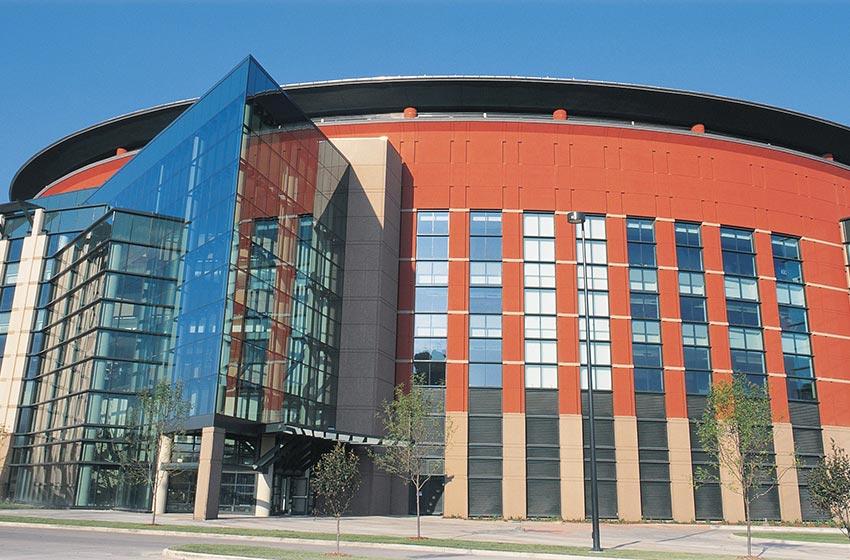Creation of the Pepsi Center, a 21,000-seat indoor arena to house professional sporting events, concerts and speakers.
The site of the Pepsi Center is located in the Central Platte Valley (CPV) on the eastern bank of the South Platte River and the southwestern bank of the Cherry Creek. As the railroads moved into Denver in the 1870s, the northern most tip of this area became isolated by right-of-way acquisitions for the railroads. Then between 1889 and 1929, elevated automobile viaducts were constructed over the numerous railroad tracks in the CPV in order to link lower downtown Denver to the neighborhoods west of the South Platte River. Since the viaducts were not intended to serve the CPV, the remnants of land between the railroads and the river were largely inaccessible and undeveloped.
After the “Flood of the Century” in 1965, which ravaged a 10-mile stretch of the CPV, Mayor Tom Currigan commissioned “In Response to a Flood,” a far reaching blueprint for redevelopment of the CPV into a mix of commercial, civic and recreational uses, with a focus on parks, sports and entertainment venues, and a campus for higher education. A decade later in March 1977, Mayor McNichols and the City Council adopted a comprehensive plan for the Central Platte Valley. The plan paved the way for Mayor Currigan’s blueprint to become a reality, but it would take decades of effort to make it happen.
In the mid-1990s Denver faced an increasingly common challenge – keeping its professional sports teams in the center of the city. McNichols Arena had been used for decades to house sporting events, including the Denver Nuggets, but their contract was set to expire and Denver risked losing the team to the suburbs, or worse, another major metropolitan city.
In November 1997, the City acquired an approximately 52-acre site in the CPV from the Southern Pacific Railroad, part of which is now the Pepsi Center. The acquisition enabled the City to keep the Denver Nuggets and the Colorado Avalanche in Denver and to fulfill the vision laid out for the CPV by Mayors Currigan and McNichols decades before. After much negotiation, the City reached agreement with Ascent Entertainment Group to develop the Pepsi Center and keep the teams in Denver for a 30-year contract term.
After more than a century of railroad and industrial uses, the site lacked basic city infrastructure. It was environmentally contaminated and declared a Superfund Site by the Environmental Protection Agency. In an effort to reclaim the site and return it to productive use, DURA expanded the boundaries of the existing adjacent Rice Yards Urban Renewal Area, which had been created in 1992 to help facilitate development of Elitch Gardens.
Following expansion of the urban renewal area, DURA entered into an agreement with Ascent to provide TIF assistance to fund site demolition, environmental remediation, and other site-wide improvements totaling $36.5 million. In addition, DURA disbursed another $4.5 million in City funds for construction of needed public infrastructure. As a result of this unique public-private collaboration among the City, DURA, and the developer, rehabilitation and reuse of the former Rice Yards site was enabled and the path for development of the $160 million Pepsi Center was laid.
Spanning between Auraria Parkway, the Consolidated Main Line railroad, and Speer Boulevard, the Pepsi Center covers nearly 45 acres. The Pepsi Center includes a five-level, 21,000-seat, indoor arena, totaling 675,000 square-feet.
